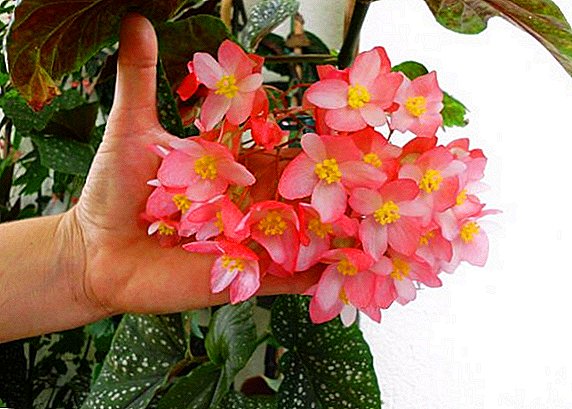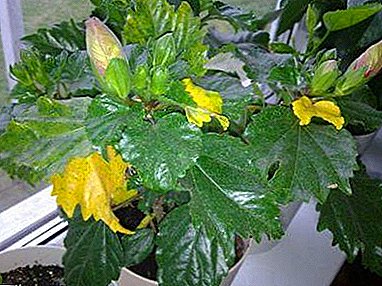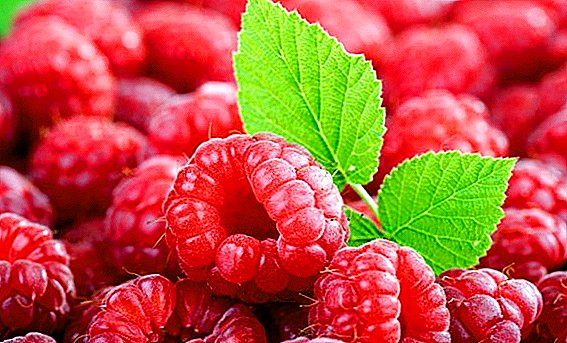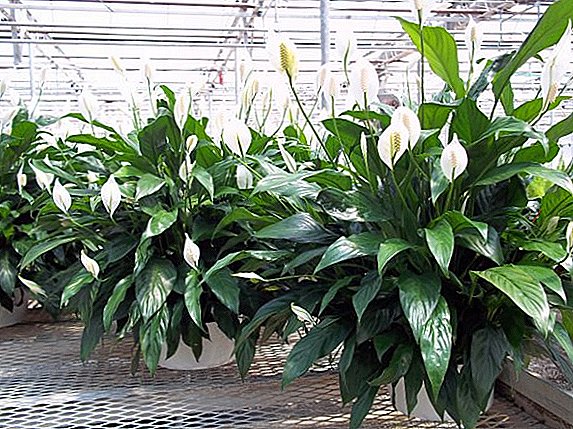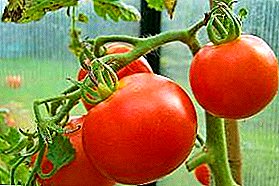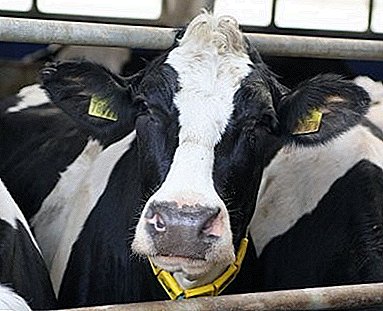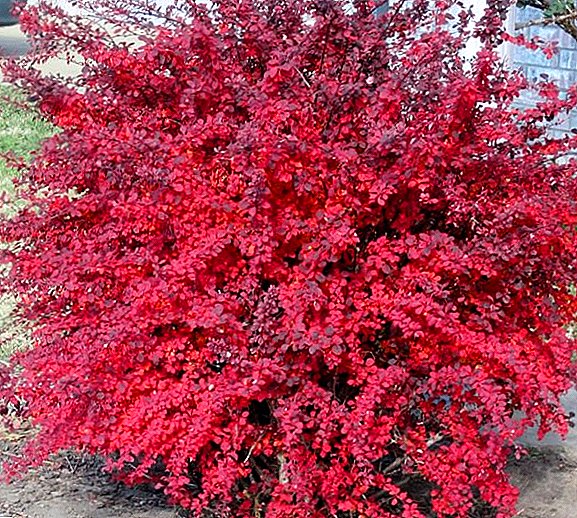 In difficult northern conditions, vegetables and fruits that are familiar to us do not grow. However, thanks to the work of breeders, plant varieties were bred that can withstand prolonged cold weather and have time to ripen in a short summer. One of these crops is beetroot. Consider which varieties of this vegetable are the most favorable for growing in Siberia and the rules for caring for them.
In difficult northern conditions, vegetables and fruits that are familiar to us do not grow. However, thanks to the work of breeders, plant varieties were bred that can withstand prolonged cold weather and have time to ripen in a short summer. One of these crops is beetroot. Consider which varieties of this vegetable are the most favorable for growing in Siberia and the rules for caring for them.
The best varieties for Siberia
The best for Siberia will be cold-resistant, undemanding, table beet varieties capable of growing in areas of high-risk agriculture.
Since the breeders of Russia for a long time sought improved rates of survival of this vegetable in the north, it is the native varieties that have advantages over others. The ripening period of vegetable culture is divided into early, middle and late. Regardless of the duration of the period of formation of the root, all varieties are resistant to cold:
- early varieties - have the ability to use without heat treatment and ripen in summer:
- "Bordeaux 237". The flesh is juicy, dark red, sweet. It is not subject to diseases and pests. Can be stored for more than six months.
- "Modana". The middle root is maroon, tasty, but not stored for long. Not afraid of pests and diseases.
- "Pablo F1". The flesh is dark red, with excellent taste, in the vinaigrette looks great. May be stored for several months. The rind is thin.
- "Bohemia". The middle has a smooth dark color, very juicy and sugary. Not sick and stored for a long time.
- "Detroit". Root crops of small size. The variety requires watering and fertilizer. Not infected with diseases.





- medium varieties - characterized by longer storage, they can be sown for the winter:
- "Borschchevaya". The flesh is dark crimson, tasty. The variety is unpretentious to the soil. The rind is thin. Used for making salads, borscht, juices.
- "Delicious". The middle of the dark cherry color, the fruits are small and round in size. The variety is universal and there are no restrictions in cooking.
- "Opole". Root crops are oblong, moderately sweet, skin is thin. Can be stored for up to six months, and the quality of the fruit is not lost.
- "Incomparable A 463". Root crops of a flat form, high-yielding, dark and cherry shade, juicy. Not afraid of diseases and pests. The collected gifts successfully endure the cold winter and do not lose their taste.




- late varieties - characterized by long ripening time. They are distinguished by the ability not to be afraid of spring and autumn frosts and hot summer. Root crops lie down to a fresh crop, practically without losing weight and form:
- "Renova". Has the shape of a cylinder and the flesh of red and purple hue. Awarded with glorious taste and lack of beet smell. The harvest is plentiful and unassuming in growing.
- "Monofilament". The color of the flesh is maroon. The variety has a sweetish taste and a lot of juice, a flat shape and a generous harvest.
- "Cylinder". It has a cylindrical shape and bright color, has excellent taste characteristics and is characterized by the absence of smell. Beet gifts are stored for about nine months. The variety is resistant to heat, frost, diseases, pests.
- "Matron SeDeK". The shape of the fruit is flat-rounded, the color is dark, the taste is pronounced. A root crop of long storage, does not lose flavoring properties.
- "Citadella". It has the shape of a cylinder, medium length, bright red color. Subject to the conditions can be stored until the month of May. Taste, color, appearance is almost not subject to change.




Read also about cultivation of cherries, grapes, apple-shaped shallots, potatoes, rhododendron, hydrangea, perennial flowers in Siberia, as well as about the best varieties of tomatoes, potatoes, raspberries for regions with harsh climate.
When to sow beets
Planting of vegetables is carried out both in late autumn and spring. The period depends on the time of harvest. To enjoy the vegetable earlier, the seeds are placed in the ground in the fall under the snow (end of October). Pick unpretentious varieties and endure well cold, with a short period of maturation. The same varieties are planted in early spring.
Warming up the soil affects the exact date.. Early varieties should be planted in the ground, heated to + 5 ... +6 degrees at a depth of 10 cm (mid-May for the regions of Siberia). The rest - up to + 8 ... +10 degrees. We specify that the early varieties are not subject to storage.
For the long-term preservation of all qualities, the roots are to be harvested at the end of September, not earlier, otherwise the root crop will not have time to accumulate sugar, providing it with prolonged storage. This means that middle and late beet varieties of the Siberian region are planted in the second half of June.
Did you know? The inhabitants of Eastern Europe and the Balkans used beet root vegetables to eat only to protect themselves from the plague.
There is the cultivation of beet crops using seedlings, which can be sown in March and planted in the ground at the end of April, which means getting the crop ahead of time (from 18 to 25 days). Given the climatic features of Siberia, the second method gives a more generous and valuable harvest. 
Where to plant on the site
Root beet appreciates free field space, good lighting. You should not plant it near fences, near trees and shrubs. The soil loves loamy, rich in organic matter, and sandy loam with a neutral water- and air-permeable medium (slightly alkaline also suitable).
Find out what characteristics soil varieties have, as well as how to determine soil acidity.
It grows poorly on clay soil with an acidic environment and nearby groundwater. Wood ash will help reduce acidity.
Beets are planted in the place of last year's potatoes, tomatoes, cabbage, legumes and grain crops. Beet culture grows well where organic was introduced a year or two before it. Fresh manure is not recommended.
Did you know? For the first time, beetroot was introduced into the daily ration in the Middle East and the Eastern Mediterranean, although at that time only leaves were eaten, and the roots were used for medicinal purposes.
Soil preparation at the site
Soil preparation is enclosed in a deep digging site in the fall, which takes place in two stages. First, the disking process is carried out, and after another month - plowing, while not forgetting to remove the weeds. In the spring, the soil is additionally loosened and leveled. With a close location of groundwater beds should be high. 
Sowing seeds in open ground
When sowing seeds in open ground must be observed such recommendations:
- the distance between the sowing rows should correspond to the norm of 20-25 cm;
- seed material is placed at a depth of 3-4 cm before winter, and in the spring enough 2-3 cm;
- The introduction of a mulching peat or humus layer on the ridge completes the sowing process. This procedure is especially important for under-winter crops;
- acceleration of seed growth in the spring is achieved by their pre-soaking (a couple of days) and germination;
- It is recommended to loosen the soil across the sowing rows until young shoots appear.

Aftercare
The beginning of the growing season of the root requires special attention and care.
Watering
Sprouting requires timely watering, especially in dry hot weather. It happens that watering is replaced by hilling with prolonged rains. With generous watering of overdried soil, root crops appear cracks. It is advisable to produce a wetting method sprinkling. Two weeks before picking vegetable gifts, watering is over.
We advise you to read about the choice of sprinklers for watering the garden.
Thinning
It is mandatory that young sprouts need at least two thinning for the period of appearance of the third and fifth leaves. The distance between the sprouts should be 6-8 cm. 
Soil care
Young, not yet mature shoots must be regularly and carefully weeded, otherwise the weeds will simply destroy them. Never wait for the formation of solid soil in the garden. Root crops will grow less tasty and more rough, tough.
Find out what to do if the beets do not sprout.
Top dressing
Before planting, superphosphate and potassium chloride (mineral fertilizers) are applied. 35 square meters of superphosphate, 15 g of saltpeter and potassium chloride per square meter will be spent per square meter. Increased yield is achieved by adding compost or humus. But after thinning the beet culture, it is poured over with water with the addition of nitrogen (potassium nitrate, urea, nettle extract) to grow the outlet. The following feeding is carried out after the formation of the fruit (slightly more nut) phosphorus-potassium fertilizers. All nitrogen compounds should be excluded.
Important! Beets have the ability to accumulate nitrates, so do not overdo it with nitrogen fertilizers.
In addition, beetroot is the only crop that needs feeding. saltto become tastier and more tender. The explanation of the surprising fact is in the genesis of the plant. The sea, saturated with salt wind of the Mediterranean for long centuries wrapped the plant, and the salt became vital to this culture. Top dressing is carried out on well-moistened soil, watered at the root.
Video: feeding beets with salt solution
When to clean and how to store
The month of October is considered the most favorable for harvesting in Siberia. But it is necessary to focus on the main signs of ripening: tops wither, lower leaves dry, the fruit gained the desired weight and size.
Important! Immediate cleaning occurs when predicting the first frost. The frozen top of the beet makes it unsuitable for storing the entire part of the root.
On a dry warm day, it is time to prepare the beet crop for storage. Vegetables gently break in, free from soil, cut off the tops, side roots, give airing (2-4 hours). Before being sent to storage, root vegetables are sorted out, removing unsuitable ones.
There are two storage methods:
- the first involves the presence of a sump where the vegetable is completely covered with sand. The pit should be protected from rodents;
- the second is achieved by the presence of cool dark rooms (basement, cellar, refrigerator) with temperatures ranging from 0 ° C to +2 ° C and humidity of 90%.
Prepare beets for the winter can also be a method of drying and freezing.
Video: features of the cultivation and storage of beets in Siberia
In the cold climatic conditions of Siberia, such a root beet grows well and gives a bountiful harvest. Storage does not require special expensive conditions. Plant care is simple.


